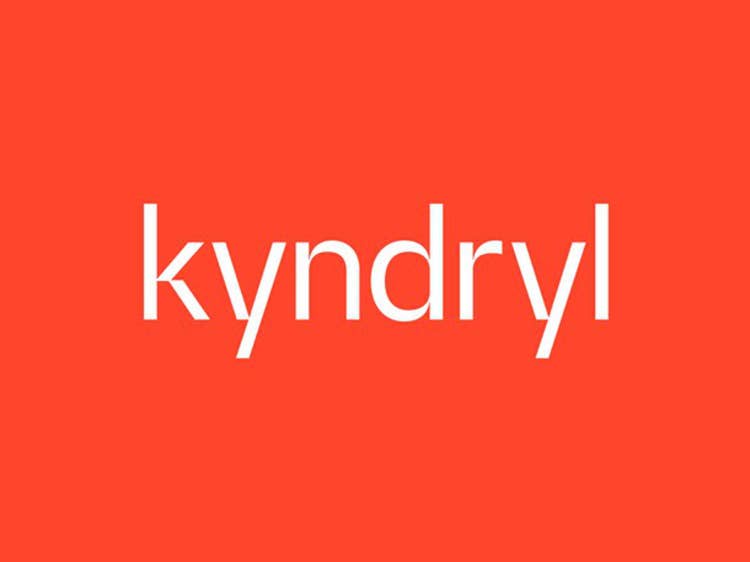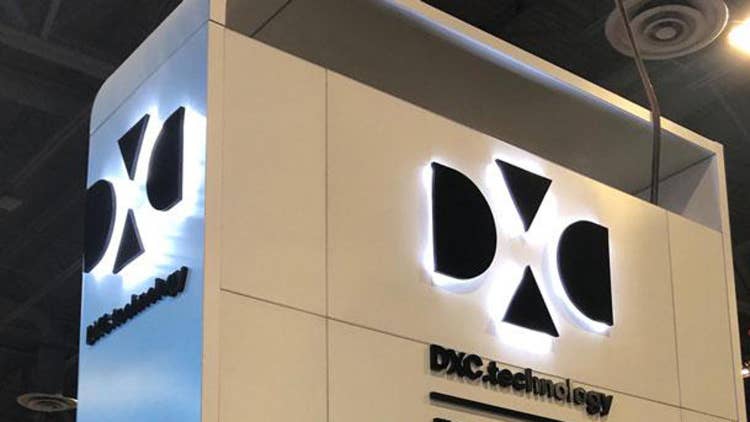8 Big New Revelations About IBM’s Kyndryl Spin-Off
A new regulatory filing uncovers details about Kyndryl’s business and operations, including financial results for the past several years, workforce reductions, the competitive landscape and vendor partnerships.

The Kyndryl Spin-off Approaches
As Kyndryl prepares for life as a public company independent of IBM, the managed infrastructure unit has disclosed an array of new details about its business and operations in a regulatory filing.
Revelations in Kyndryl’s new filing with the U.S. Securities and Exchange Commission cover topics such as Kyndryl’s declining revenue for the past several years, workforce reductions, the competitive landscape (including with competitors such as DXC Technology) and vendor partnerships beyond IBM (such as with VMware and Microsoft).
In the SEC filing, Kyndryl said it foresees taking part in a $415 billion market for providing “innovative services to design, run and modernize customer technology environments.”
“Kyndryl is uniquely positioned to address these IT services needs, as a natural extension of the role it plays supporting the mission critical technology infrastructure of the world’s most important businesses and institutions,” the filing says.
In a separate filing with the SEC on Tuesday, IBM said the spin-off of Kyndryl is still on track to be completed by the end of 2021. IBM is spinning off its managed infrastructure business as Kyndryl as the tech giant continues to sharpen its focus on priority areas such as hybrid cloud and artificial intelligence.
CRN has reached out to Kyndryl for comment. IBM declined to comment.
What follows are eight big new revelations about IBM’s Kyndryl spin-off.

Revenue In Decline
From the get-go, Kyndryl will be a massive player in the IT channel—set to become No. 2 on CRN’s Solution Provider 500 list, behind only Accenture, post-separation from IBM. “We are the largest provider of IT infrastructure services and are recognized by research analysts (e.g., Gartner, Forrester, IDC, Everest, NelsonHall, and HfS Research) as a leader in key service areas,” Kyndryl said in its Form 10 filing with the SEC.
However, the business now known as Kyndryl has been seeing revenue declines for at least the past several years, according to the SEC filing. Pro forma revenue for the business during the first six months of 2021 was $9.52 billion, down a half-percent from the same period a year earlier.
The business saw a sharper drop in 2020, with pro forma revenue declining 4.5 percent to $19.35 billion from the year before. “Revenue declined primarily due to a reduction in client volumes within industries heavily impacted by the global pandemic,” Kyndryl said in the SEC filing.
In 2019, revenue for the business had also declined, falling 7 percent to $20.28 billion. In 2018—which is as far back as the filing provides figures for—revenue for the Kyndryl business was $21.8 billion.

Americas Business Results
In terms of regions where the Kyndryl business has been hit hardest, the SEC filing singles out the Americas. In 2020, for instance, the overall decline in revenue was “driven by declines in the Americas segment,” Kyndryl said in the filing.
Kyndryl revenue in the Americas region for 2020 came in at $7.4 billion, according to the filing. That was a drop of 6.9 percent from 2019, when revenue was $7.95 billion. The revenue results in 2019, meanwhile, represented a drop of 7.3 percent from 2018—when Kyndryl revenue came in at $8.58 billion.
Other regions have also seen declines, including the Europe/Middle East/Africa region, but the revenue drop there was just 3.7 percent in 2020, year-over-year. In Japan, revenue grew 3.8 percent to reach $3.04 billion in 2020, according to the filing.

Loss Of Customers
Another factor in Kyndryl’s revenue decline is a loss of customers, according to the SEC filing. In 2020, Kyndryl ended the year with 4,400 customers. That represented a loss of 200 customers from the prior year, since Kyndryl reports that it had ended 2019 with 4,600 customers.
However, 2019 saw an even larger loss of customers—with the company reporting that its customer base decreased by 500 customers during the year. The Kyndryl business had ended 2018 with 5,100 customers, according to the filing.
“Like our clients, we prioritized higher value opportunities in 2019. Discrete account and portfolio actions were taken to improve our profitability in the long term even though they had an impact on our 2019 results,” Kyndryl said in its SEC filing.

Profit/Loss Picture
Along with declining revenue, Kyndryl reported that it generated a $2.01 billion net loss last year. On an adjusted basis, the business generated pretax profits of $378 million in 2020, according to a source close to the spin-off.
The business’ pro forma $2.01 billion net loss in 2020 represented an increase from 2019, when the reported net loss was $943 million, according to the Kyndryl filing. The higher net loss in 2020 was driven in part by $800 million in workforce rebalancing charges, the filing says.
“Losses from operations were $2.0 billion, an increase of $1.1 billion when compared to the prior year, primarily due to the higher workforce rebalancing charges,” Kyndryl said in the filing.
Pro forma net loss for the business during the first six months of 2021 was $887 million, according to the Kyndryl filing. A source close to the spin-off said that the business’ pretax profit for the first half of the year was $156 million, on an adjusted basis.

Workforce Reductions
In 2020, the IBM business now known as Kyndryl undertook workforce reductions—referred to as “workforce rebalancing”—in order to “improve the profit and margin profile of the business,” according to the SEC filing (resulting in the $800 million charge mentioned previously).
“We took these structural actions to simplify and optimize our operating model,” Kyndryl said in the filing.
The filing did not disclose how many employees have exited the business in connection with the workforce reduction actions. Kyndryl reports having approximately 90,000 employees worldwide.
In the second quarter of this year, Kyndryl saw a “modest margin expansion resulting from the productivity actions taken in 2020 to improve the profit and margin profile of the business,” the filing says. “We continue to expect the majority of the employee exits to be completed by the end of 2021.”

Employee Locations
While Kyndryl is based in New York, the vast majority of the company’s 90,000-person workforce is located outside of the U.S., according to the SEC filing.
“Approximately 92% of our employees work outside the U.S., with workforce hubs in India, Poland, Brazil, Japan, Czech Republic, and Hungary,” the filing says.
Still, in 2020, the Americas region contributed 38 percent of Kyndryl’s revenue and 55 percent of the gross profit for the business, according to the filing. For the other regions in 2020, Europe/Middle East/Africa contributed 38 percent of revenue and 5 percent of gross profit; Japan contributed 16 percent of revenue and 29 percent of gross profit; and Asia Pacific contributed 8 percent of revenue and 12 percent of gross profit.

Competitive Landscape
In the risk factors section of the SEC filing, Kyndryl cited competitors as one of the key risks faced by the business.
“Our competitors include incumbents that have expanded their offerings to migration and management of cloud-based environments; companies that utilize labor-based models and leverage talent pools primarily in lower-cost countries that have grown to offer a broad range of services with a worldwide presence; and advisory-focused system integrators specializing in bringing together disparate technology environments so that they function as one,” Kyndryl said in its SEC filing.
“Many of these companies offer a mix of advisory, implementation, and managed services across infrastructure, application, and business processes,” Kyndryl said.
The company singled out a handful of competitors in the filing by name—including DXC Technology, No. 4 on CRN’s Solution Provider 500 list for 2021, which was created in 2017 through the merger of CSC and HPE Enterprise Services. In terms of competitors, “examples include: Atos, DXC, Fujitsu, Infosys, Rackspace, Tata Consultancy Services, and Wipro, among others,” Kyndryl said in the filing.

Vendor Partnerships
Following the spin-off from IBM, Kyndryl and IBM will “continue to have a strong commercial relationship,” IBM said in its own SEC filing on Tuesday. As part of this relationship, Kyndryl said in its filing that it plans to “enter into an Intellectual Property Agreement with IBM, pursuant to which IBM will grant to us perpetual and irrevocable, non-exclusive, royalty-free licenses to certain proprietary software and documentation, databases, trade secrets, and certain other intellectual property rights (excluding patents and trademarks) that are used in the Business but are being retained by IBM.”
“The foregoing license excludes IBM’s commercial software, which will be subject to IBM’s standard commercial terms if we choose to use it in the Business,” Kyndryl said.
Beyond working with IBM, Kyndryl mentioned just a few other vendor partners by name in the filing—VMware, Microsoft and ServiceNow—but said that partnerships with additional vendors is part of the plan.
“We have a strong and long-standing foundation developed by governing and managing complex technology environments, including IBM (e.g., Red Hat and Cloud Paks) and third-party technologies (e.g., VMWare, ServiceNow, and Microsoft),” Kyndryl said in the filing. “With increased freedom of action, we will extend these capabilities to an even broader ecosystem of technology providers and develop more services that are digitally consumable to expand accessibility to new customers and markets.”